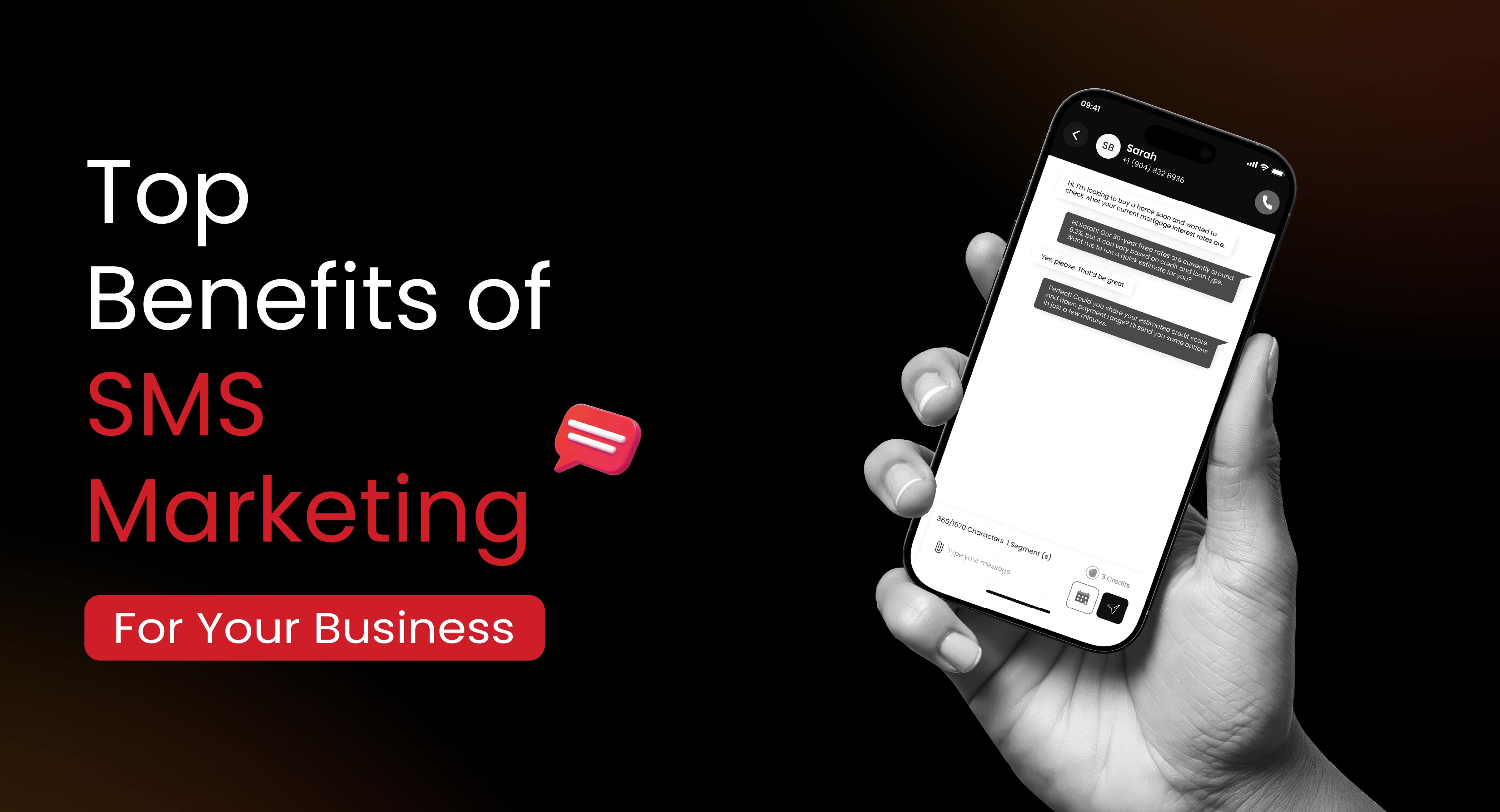
Text messages are powerful. They get opened. They get read. And they drive action.
But here's the thing – just sending texts isn't enough. You need to know if they're actually working. Are people taking any action? Are they buying your products? Are they unsubscribing?
That's where SMS marketing KPIs come in. These key performance indicators tell you exactly what's working and what's not in your text message campaigns.
As a top bulk SMS platform, we’ll walk you through the key metrics to track SMS marketing success. From delivery rates to revenue impact - let’s dive in!
Understanding SMS Marketing KPIs
The most basic question. What are SMS marketing KPIs? They are specific measurements that tell you how well your text message campaigns are performing.
Think of them as your campaign's report card. They show you what's effective, what needs improvement, and where you should focus your efforts next.
Why track these numbers? Simple. You can't improve what you don't measure.
When you closely monitor your SMS metrics, you can:
- Spot problems before they accelerate
- Identify the most effective messages and offers
- Understand what your audience responds to
- Make smarter decisions about your marketing budget
- Prove the ROI of your SMS marketing efforts
The beauty of SMS marketing is that it's highly measurable. Every message creates data points you can use to refine your strategy. The more you learn from your metrics, the more effective your future campaigns will be.
2.0 Essential SMS Engagement Metrics
Let's start with the basics – how are people interacting with your text messages? These engagement metrics are the foundation of your SMS analytics.
2.1 SMS Delivery Rate
What is an SMS delivery rate? Well, the delivery rate shows what percentage of your messages actually reach your customers' phones.
Why it matters: If your messages aren't being delivered, nothing else matters. Low delivery rates mean your audience isn't even seeing your content.
Here’s how you can calculate the delivery rate:

What are some common delivery issues? Here’s a list:
- Invalid phone numbers
- Carrier filtering
- Technical glitches
- International delivery problems
What can you do to improve your delivery rates? Here are some best practices you can follow:
- Regularly clean your contact list
- Use a reputable SMS marketing platform like Easify
- Avoid spam trigger words
- Verify numbers at the point of collection
- Send during appropriate hours
A healthy delivery rate should be at least 95%. Anything lower means you should investigate potential issues with your list or provider.
2.2 SMS Click-Through Rate (CTR)
Your CTR measures how many recipients click on links in your text messages.
Why it matters: Clicks show intent and interest. They are often the first step toward a conversion.
Here's the formula to calculate:

Tips to boost your click-through rate:
- Keep messages concise and clear
- Create a sense of urgency
- Offer clear value (discounts, exclusive info, etc.)
- Personalize messages when possible
Statistics show that SMS marketing achieves the highest hyperlink click-through rate compared to email marketing, search ads, and social media advertising.
2.3 SMS Conversion Rate
Your conversion rate shows the percentage of people who took the action you wanted after getting your SMS. This could be anything like making a purchase, filling out a form, or anything else you planned.
Why it matters: This is where texts turn into actual business results.
Here’s how you can calculate the conversion rate:

Steps to improve conversion rates:
- Match offers to what customers want
- Simplify the purchase process
- Test different offers and messages
- Time your messages right
Follow up with reminder texts when needed
Conversion rates differ by industry and campaign type. However, a 2-5% rate is generally considered good for SMS campaigns.
2.4 SMS Response Rate
For two-way SMS campaigns, response rate measures how many recipients reply to your messages.
Why it matters: Customer responses indicate high interest and provide useful feedback.
Here’s how to calculate:

To encourage more responses:
- Ask clear, specific questions
- Keep it conversational
- Make responding easy
- Offer incentives for feedback
- Show that you value their input
- Respond quickly to maintain the conversation
2.5 SMS Unsubscribe/Opt-out Rate
This metric shows the percentage of recipients who opt out after receiving your message.
Why it matters: A high unsubscribe rate is a warning sign that something's wrong with your SMS strategy. In such cases, it’s time to revamp.
Here’s how to calculate:

Common reasons for unsubscribes:
- Messaging too frequently
- Irrelevant content
- Messages sent at inconvenient times
- Poor targeting
Struggling with high unsubscribe rates? We’ve got some useful strategies for you:
- Be clear about message frequency upfront
- Segment your audience
- Provide genuine value in every message
- Respect timing (no late night or early morning texts)
- Make opt-out instructions clear but not so prominent
A healthy unsubscribe rate should stay below 3%. If you're seeing higher numbers, it's time to rethink your approach.
You can also read our blog to learn some strategies to master customer retention with SMS marketing.
2.6 SMS List Growth Rate
This metric is pretty basic – it shows how many people are signing up for your text messages within a certain timeframe.
Why it matters: A growing list means a growing opportunity to reach more customers.
Strategies to grow your SMS list:
- Promote your SMS program across all channels
- Offer exclusive content or deals for subscribers
- Use keyword campaigns
- Add SMS opt-ins at checkout
- Run contests or giveaways
- Showcase the value of joining
Pro tip: Aim for positive month-over-month growth. Even a 3-5% monthly growth rate can significantly expand your reach over time.
3. Revenue Metrics for SMS Campaigns
Now let's talk money. There are a few metrics that help you understand the financial aspects related to your SMS marketing. Let’s explore them:
3.1 SMS Campaign ROI
What does ROI stand for? Return on Investment.
ROI measures the profit generated compared to the cost of your SMS campaign.
Why it matters: ROI tells you whether your SMS marketing is actually profitable.
Here’s how you can calculate ROI:

- Factors affecting SMS ROI:
- Message costs
- Platform fees
- Staff time for campaign management
- Offer value (discount amount, etc.)
- Conversion effectiveness
Maximizing ROI is the target of every business running SMS campaigns. Here are a few tips for that:
- Optimize send timing
- Test different offers to find the most effective
- Focus on retention, not just acquisition
- Build automated SMS flows for key customer journeys
3.2 Cost Per Conversion
This metric detects the average spending cost for one conversion.
Why it matters: It helps you understand the efficiency of your SMS spending.
Here’s how you can calculate this:
The aim is to have a low cost per conversion rate. Here are a few things that you can do to reduce cost per conversion:
- Improve message targeting
- Test different CTAs and offers
- Optimize landing pages
- Focus on high-intent customer segments
- Remove friction from the conversion process
- Automate campaigns where possible
3.3 Average Order Value (AOV) from SMS
AOV measures the average amount customers spend when making a purchase through your SMS channel.
Why it matters: Higher AOV means you're getting more value from each conversion.
Strategies to increase AOV via SMS:
- Promote bundle deals
- Offer free shipping
- Send targeted upsell recommendations
- Create limited-time offers
- Implement tiered discounts (spend more, save more)
- Showcase complementary products
4. Technical Metrics for SMS Performance
These are the behind-the-scenes metrics that help you understand the technical performance of your SMS campaigns. Let’s explore them:
4.1 SMS Latency (Delivery Speed)
Latency measures how quickly your messages are delivered after being sent.
Why it matters: In time-sensitive campaigns, even a few minutes delay can impact results.
Factors affecting latency:
- SMS provider's infrastructure
- Carrier networks
- Message volume
- Recipient's device status
- Time of day
- Geographic location
To optimize delivery speed:
- Choose a reliable SMS provider with direct carrier connections like Easify powered by Twilio
- Avoid peak sending times when possible
- Schedule time-sensitive campaigns in advance
- Test delivery speeds before major campaigns
- Monitor latency trends over time
Ideally, most messages should be delivered within seconds of sending.
4.2 SMS Bounce Rate
Bounce rate shows the percentage of messages that couldn't be delivered due to permanent issues.
Why it matters: High bounce rates waste your SMS budget and indicate quality issues in your contact lists.
Common causes of bounces:
- Disconnected numbers
- Invalid formats
- Landline numbers (can't receive SMS)
- Blocked numbers
- Carrier issues
To reduce bounce rates:
- Verify numbers at point of collection
- Remove invalid numbers promptly
- Update your list regularly
- Monitor for carrier-specific issues
It’s always healthy to maintain a bounce rate below 2%. Higher rates suggest you need to clean your subscriber list.
4.3 Carrier Filtering Rate
This metric tracks how often your messages are blocked by mobile carriers before reaching recipients.
Why it matters: Carrier filtering can severely impact campaign performance. They may indicate compliance issues and can seriously affect your business.
Common trigger factors:
- High-volume sending
- Spam-like content
- Too many links
- Consumer complaints
- Sending from shared short codes
To avoid carrier filtering:
- Follow carrier compliance guidelines
- Avoid spam trigger words
- Use dedicated short codes or 10DLC numbers
- Maintain consistent sending patterns
- Honor opt-outs immediately
Include clear sender identification
5. How to Benchmark SMS Marketing KPIs and Evaluate Campaign Success
Now that you know what to measure, let's talk about how to use these metrics effectively.
5.1 Define Your SMS Marketing Goals
Before diving into metrics, clarify what success looks like for your business:
- What are you focused on?
- Driving immediate sales?
- Building long-term customer relationships?
- Increasing store traffic?
- Boosting event attendance?
- Improving customer service?
Your goals determine which KPIs matter most. For example:
- Revenue-focused campaigns should prioritize conversion rates, ROI, and AOV
- Engagement campaigns might focus more on response rates and CTR
- List-building initiatives would track growth rate and cost per subscriber
Set specific, measurable targets for each campaign to provide clear benchmarks for success.
5.2 Select Your SMS Campaign Metrics
Different campaign types require tracking different KPIs:
For promotional campaigns:
- Conversion rate
- ROI
- Revenue per message
- Unsubscribe rate
For transactional messages:
- Delivery rate
- Latency
- Customer satisfaction scores
For informational campaigns:
- Click-through rate
- Response rate
- Engagement metrics
Register Today for Exclusive Access!
5.3 Benchmark and Track Your Campaign Performance
Set baseline metrics from:
- Your SMS data history
- Industry benchmarks
- Competitive analysis
- Performance of other marketing channels
- Tools for tracking SMS performance include:
- Your SMS marketing platform's analytics. For instance, Easify powered by Twilio offers built-in SMS analytics so that you can gain insights on what’s working and what’s not in your SMS campaigns.
- Google Analytics (with integration)
- CRM data
Track trends over time and not just individual campaign results. This helps you spot patterns and progress.
SMS marketing benchmarks:

5.4 Analyze Your Campaign Data
When analyzing the data from your campaigns, it’s important to look beyond the numbers. Here are a few things you can do:
- Segment performance by audience characteristics
- Compare different message types and offers
- Analyze timing patterns
- Look for correlations between metrics
Taking things a step further, here are a few questions you need to find answers to:
- Which customer segments respond best?
- What types of offers drive the highest conversion?
- When do messages perform best?
- Which messages cause unsubscribes?
- How does SMS performance compare to other channels?
Use these insights to develop some best practices for SMS marketing specific to your audience.
5.5 Test and Optimize SMS Campaigns
A/B testing is crucial for SMS optimization. You compare things to find out what works for your business. Here are a few things that you can do:
- Test one element at a time (message length, offer type, CTA, timing)
- Use statistically significant sample sizes
- Measure impact on both primary and secondary metrics
- Document learnings for future campaigns
Strategies for improvement have to be carried out constantly. It’s not a one-time process. Here are a few things that you should follow:
- Refine audience segmentation
- Personalize messages based on customer data
- Optimize sending frequency
- Improve offer relevance
- Test different message formats
Remember, improvements, however small they may be, can benefit your business in the long run.
6. Improving SMS Marketing KPIs with Best Practices
Now let's explore some proven strategies to elevate your SMS performance across all KPIs that we discussed so far.
Personalization and Segmentation
Generic blasts don't cut it anymore. Today's customers will only give attention to something that really appeals to them:
- Use first names in messages
- Mention past purchases
- Segment by purchase history, browsing behavior, location, etc.
- Create unique offers that appeals to different customer segments
Optimizing SMS Sending Times
Timing can make or break your SMS campaign:
- Respect time zones and quiet hours
- Test different days of the week
- Align with customer shopping patterns
- Consider industry-specific timing (for example, restaurants should send texts before mealtime for the best response)
- Space out messages to avoid overwhelming recipients
Using Compelling CTAs
Your call-to-action drives results, so:
- Keep CTAs clear and concise
- Create urgency when appropriate ("Today only" or "Limited supply")
- Make the next step obvious
- Use action verbs ("Shop now" instead of "Click here")
- Highlight the value ("Save 20%" rather than "Buy now")
- Place CTAs near the beginning of longer messages
Compliance with SMS Marketing Regulations
Following regulations isn't just legal, it improves performance:
- Always get explicit consent before texting
- Make opt-out instructions clear in every message
- Honor opt-outs immediately
- Identify your company in each message
- Follow frequency promises made during opt-in
- Maintain detailed records of consent
Note that compliant messaging builds trust and reduces unsubscribes.
7. Related Resources
Recommended Tools for SMS Marketing Analytics
- Easify SMS Analytics: built-in analytics to help you track everything about your SMS camapigns.
- Twilio: Powerful SMS API with detailed delivery reports
- Google Analytics: you can use UTM codes for the links in your SMS
- Klaviyo: Great for e-commerce SMS with revenue attribution
Case Studies of Successful SMS Campaigns
- Pizza Hut UK aimed to boost sales from existing customers using SMS geofencing. Over 15 months, this strategy increased incremental sales by 142% and was more effective than TV and online ads.
- Expedia used SMS to send personalized travel deals and recommendations to users who searched for flights and hotels in the UK. This campaign generated 17,000 clicks and achieved a 28% conversion rate.
- Game of Thrones used SMS marketing to send show reminders and subscription invites with exclusive sneak peek content. In two months, the campaign gained 70,000 subscribers, and fan sharing led to 1.5 million YouTube views.
Further Reading on SMS Marketing Best Practices
Wish to read more about best practices for SMS marketing? We’ve compiled a few resources for you:
- The Ultimate Guide to SMS Marketing eBook
- CTIA's Messaging Principles and Best Practices
- Mobile Marketing Association's Code of Conduct
Want something more industry-specific? Check out these:
- SMS marketing for the MCA industry
- SMS marketing for ecommerce
- SMS marketing for mortgage brokers
- SMS marketing for the insurance industry and agents
- SMS marketing for real estate
Conclusion
SMS marketing works. The numbers prove it. But success isn't just about sending texts. It's about measuring results and continuously improving your approach.
By tracking the right KPIs, analyzing the data, and implementing best practices, you can transform your SMS marketing from good to great.
Remember: Every message is an opportunity to learn more about what resonates with your audience. The businesses that pay attention to their metrics are the ones that ultimately win with SMS marketing.
Ready to take your text message marketing to the next level? Get started with Easify for free and discover how SMS marketing can be your best marketing tool!
Disclaimer: All formulas and analytics mentioned in this blog are for illustration and reference purposes only. Easify may not offer these analytics or related features.

SMS marketing for MCA renewals helps providers retarget existing clients, automate renewal reminders, boost ROI, and increase repeat funding efficiently

Business text messaging with Easify helps you engage customers, automate follow-ups, and convert more leads through fast, simple, and effective SMS communication.

Easify is the ultimate group text messaging app that streamlines team and customer communication with instant, reliable, and scalable SMS messaging.